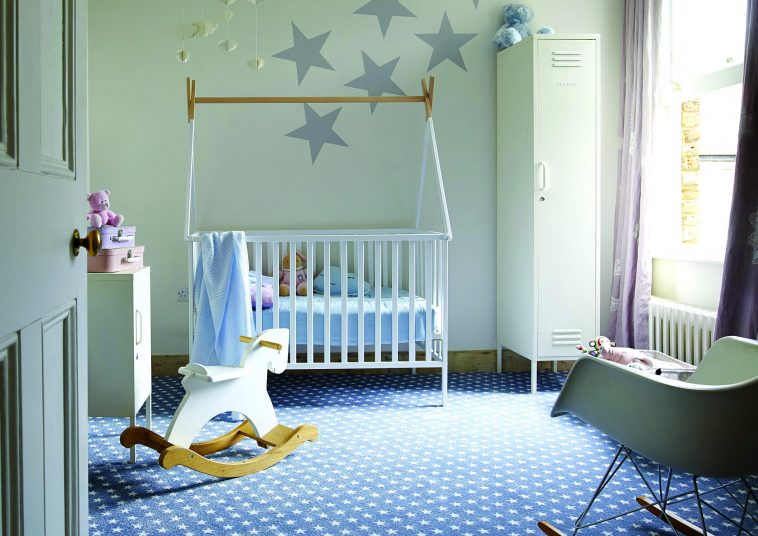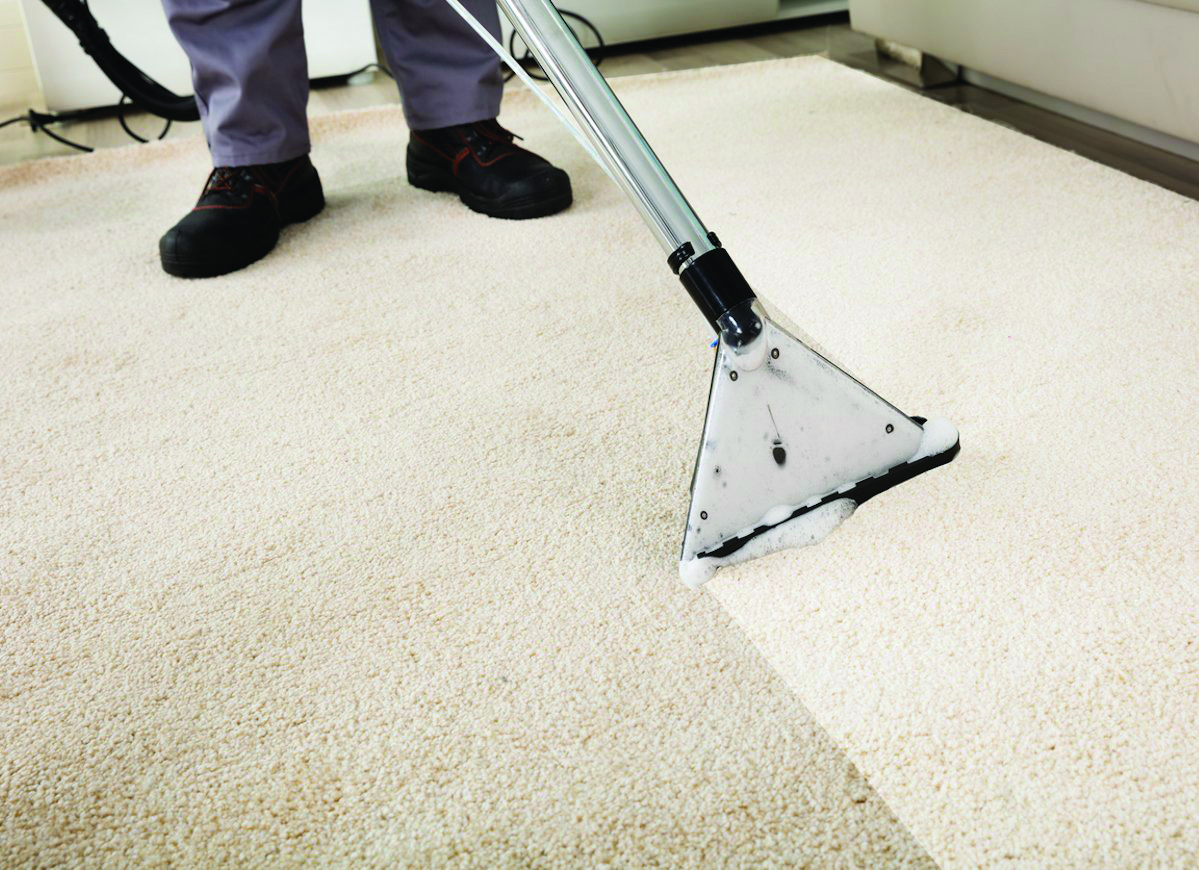Although most contemporary home designs call for wood or stone flooring, many of us still prefer carpets in special locations such as bedrooms and other areas we want to feel ‘cosy’.
All carpets consist of two elements – the upper ‘pile’ which is, in turn, attached to a ‘backing’. The pile was traditionally made of wool or silk but today the majority of carpets are composed of manmade fibres. These are usually polypropylene, nylon or polyester, all of which are cheaper than wool.
Carpets are commonly manufactured in widths of 12 feet (3.7metres) and 15 feet (4.6 metres). Specialist carpet made for hotels, cinemas, yachts and so on is made in 0.69 metre widths which are then sewn together to cover the space. Certain types of carpet are made in wider-than-standard widths because they are hard to join (seam).
But the carpet itself is only one part of the system. Although some cheaper ones are made with a padded backing already attached, the majority need a separate rubberised ‘underlay’ (pad) underneath.
This lengthens the life of the carpet and softens its tread. Carpets are usually secured at their perimeter to a ‘gripper rod’, a steel, spiked system fitted to the floor that keeps the carpet flat after the installer has stretched it and attached it to the spikes on the gripper. Factory-made widths of carpet can be joined during installation to cover wider surfaces than a standard roll size by hand sewing, though this is now considered old fashioned, or adhesive tape.
Types
Carpets can be made of a single, or several blended materials. Fibres are chosen for durability, looks, ease of manufacture and cost.
Nylon is probably the commonest fibre used. It is easy to dye and wears very well. This makes it good for industrial carpeting. Polypropylene, sometimes referred to as olefin, is also very commonly used.
Wool and wool blends can be easily dyed and the blends wear exceptionally well. The commonest blend is 80 per cent wool and 20 per cent synthetic fibre, giving rise to the term 80/20.
Wool carpets never produce static electricity when used, whereas many manmade fibres do. For some people in some homes this static can be a real nuisance, giving them an electric shock every time they touch objects in the room.
Pros
Comfort Carpet is more cosy and comfortable to sit, play or work on than are hard surfaces. It’s especially pleasant for babies and young children.
Safety Carpet is softer to land on should anyone fall on it. It’s also less likely to break things you drop.
Warmth Both in psychological and actual thermal resistance terms, carpet is ‘warmer’ than hard flooring. It also retains heat better than does a hard floor.
Noise Homes are getting noisier with all the screens and gadgets we use today. Carpets absorb noise well within a room and can, in addition, be used to reduce noise that travels from one room to another. This is especially useful in upstairs rooms or in flat conversions in older homes. Colours and patterns The possibilities are endless, compared with stone or wood.
Cons
Short life Most modern, synthetic carpets don’t last that long, especially with hard family and/or pet wear. Hardwood or stone flooring can last for scores of years, if cared for.
Maintenance Carpets absorb smells, dirt and other soiling. Hard floors, by comparison, are much less demanding.
Allergies Carpets provide an ideal home for dust mites, moulds, pet dander and hair.
Fashion Carpeted floors appear oldfashioned, which could even be a barrier to selling your home.
Carpet tiles
Carpet tiles are a perennial favourite because they are relatively inexpensive, easy to lay without using a professional, last longer than ordinary carpet and can be replaced, if necessary, one at a time, for example in high-traffic areas or where pet stains are hard to remove.
Almost always made up of a bitumen backing topped off with the carpet itself, they are versatile (e.g. can help sound deaden walls) and can be used in situations where fitted carpet wouldn’t be advisable or practical. Because this bitumen is heatsensitive, be careful that your underfloor heating is never more than 27degC in the floor itself. Tiles are usually about 7mm thick and 50cm x 50cm in size, though other sizes are available.
Carpet tiles need to be stuck down with a special ‘tackifier’ (low-tack adhesive), or double-sided tape, rather than proper carpet spray adhesive. This enables them to be removed if necessary. It’s said that up to 100 tiles in any given area don’t need sticking but most people use a ‘low-tack’ adhesive just to be sure.
Cutting them is a knack that needs to be learned. Start off by cutting with a utility knife, from the back. Score the back several times, being careful not to penetrate through to the actual carpet. Break the tile and then, from the other side, draw the knife through carefully. You’ll need a steel rule or builder’s level to cut along straight lines.
Keeping carpets clean
Most people over seventy can recall the days when cleaning a carpet or rug meant taking it outside, hanging it over the washing line and beating it till the dust was freed. No one today would consider such a method and to most, ‘carpet’ is synonymous with ‘fitted carpet’ so they wouldn’t be able to remove it anyway.
It’s worth keeping carpets clean as it prolongs their life, removes soil and allergens and gets rid of unpleasant smells. All carpets need regular vacuuming – probably at least once a week – and a professional, deep clean once a year. In very busy homes, and those with pets, they need even more frequent cleaning.
Today, it’s possible to get ‘almost professional’ machines from hire shops which usually produce very good results. Most of these – and their professional counterparts – use hot water extraction. In this, hot water (it’s not actually steam, as many people think, because the heat of steam can damage man-made carpets) along with various chemicals is sprayed on to the carpet and at once, within a second or two, sucked up by a vacuum. The soiled water is collected for later disposal.
Various professional methods involve the use of pre-treatment chemicals and some pros also use spot-cleaners for the very worst or highly-trafficked areas. But the key to success once the carpet has been cleaned is to get the carpet dry as soon as possible.
This can be achieved by opening doors and windows, playing a fan over the area, or even using a dehumidifier. For most simple household jobs, opening windows and doors is all that’s needed. It’s best to keep off the carpet completely until it’s bone dry.
Carpet tiles can be cleaned carefully but never use bleach of any kind or it can damage the backing. A damp cloth with some washing-up liquid often suffices. If not, get a proprietary carpet-cleaning fluid made for the purpose. If nothing works, simply replace the affected tiles.












